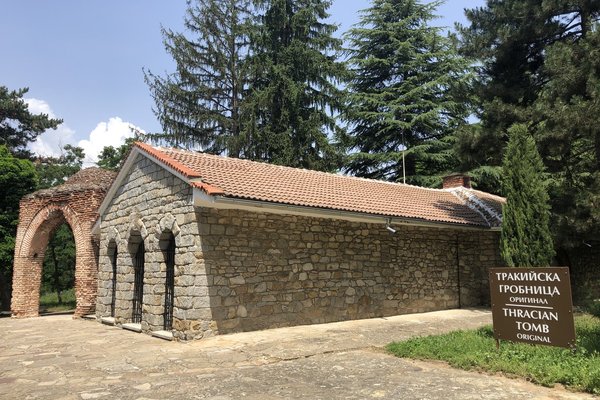Bulgaria
Thracian tomb of Kazanlak
The Thracian Tomb of Kazanlak is a masterpiece of Thracian creative art.
The monument is a vaulted brickwork "beehive" (tholos) tomb, that used to be part of a large Thracian necropolis. It comprises a narrow corridor and a round burial chamber, both decorated with well-preserved murals representing a Thracian couple at a ritual funeral feast.
Community Perspective: Unfortunately we are not allowed to visit the interior of the original masterpiece and have to make do with a replica. Be aware that it’s very small (about 3x3m). There are more authentic tombs in the rural areas around Kazanlak (on the T List as Seuthopolis) which are worth visiting – an extension to include those would make this WHS stronger.
Site Info
Official Information
- Full Name
- Thracian tomb of Kazanlak (ID: 44)
- Country
- Bulgaria
- Status
-
Inscribed 1979
Site history
History of Thracian tomb of Kazanlak
- 1979: Inscribed
- Inscribed
- Type
- Cultural
- Criteria
- i
- iii
- iv
Links
- UNESCO
- whc.unesco.org
- Official
-
- kazanlak.bg — Kazanlak (Bulgarian only)
- Related
-
- muzei-kazanlak.org — Kazanlak Museum of History
- en.wikipedia.org — Wikipedia
All Links
UNESCO.org
- whc.unesco.org — whc.unesco.org/
Official Website
- kazanlak.bg — Kazanlak (Bulgarian only)
Related Resources
- muzei-kazanlak.org — Kazanlak Museum of History
- en.wikipedia.org — Wikipedia
Community Information
- Community Category
- Archaeological site: Classical (other)
Travel Information
Not open to tourists
Recent Connections
-
Perfect Inscriptions
1979 -
Strict no-photography policy inside
Even not allowed in the copy -
Not open to tourists
Interior of the real tomb is closed. Th…
Connections of Thracian tomb of Kazanlak
- Trivia
- History
-
-
Located in a Former Capital
Seuthopolis, Capital of ancient Thrace, 5th-3rd Centuries BC -
Thracians
-
- World Heritage Process
-
-
Perfect Inscriptions
1979 -
Extensions on Tentative List
The royal necropolis of the Thracian city of Seuthopolis – a serial site, extension of the Kazanlak Thracian tomb (2016) -
Single Monuments
Also meets criterion i: masterpiece of human creative genius.
-
- Human Activity
-
-
Chariots
A chariot race is depicted in the murals inside the tombSee en.wikipedia.org
-
- Constructions
- Timeline
-
-
Built in the 4th century BC
Late 4th century, could also be 3rd (unesco website)
-
- WHS Hotspots
- Science and Technology
-
-
Recorded cultural discoveries
"Discovered by accident on 19 April 1944 under a mound of soldiers digging trenches"See 100obekta.com
-
- Visiting conditions
-
-
Not open to tourists
Interior of the real tomb is closed. There is a replica. -
Strict no-photography policy inside
Even not allowed in the copy
-
- WHS Names
-
-
Roman Province in its official title
Thrace, Created as Provincia Thracia in 46ADSee en.wikipedia.org
-
News
No news.
Recent Visitors
Visitors of Thracian tomb of Kazanlak
- alex
- Alexander Barabanov
- Alexander Lehmann
- Ali Zingstra
- Anna Wludarska
- Argo
- Ask Gudmundsen
- Astraftis
- Atila Ege
- Badwater
- BaziFettehenne
- Bill Maurmann
- Bin
- Brendan Carroll
- Cezar Grozavu
- Clyde
- Cobaltrage
- Corinne Vail
- Csaba Nováczky
- CugelVance
- Cyberczar
- Damientournay
- Dan Pettigrew
- Dimitar Krastev
- Don Irwin
- Elia Vettorato
- Elis
- Els Slots
- Emili Xaus
- Erik Jelinek
- Eva Kisgyorgy
- Evgenii
- Fan Yibo
- Feldhase
- Filip Murlak
- FS
- GeorgeIng61
- GerhardM
- Grzegorz Andruszkiewicz
- Hadrianus
- Harald T.
- Harry Mitsidis
- H Beswick
- Hubert
- Hurrvinek
- Iain Jackson
- Igloo
- irosey
- Ivan Rucek
- janis
- Janos
- Jarek Pokrzywnicki
- Jasam
- Jean Lecaillon
- J_neveryes
- Joel on the Road
- John Smaranda
- Jonas Kremer
- jonathanfr
- Joyce van Soest
- Justin Rickey
- KentishTownRocks
- Knut
- kutasp
- Lisu Marian
- Luboang
- Ludvan
- Luis Filipe Gaspar
- Maciej Gil
- Martina Rúčková
- Mathijs
- Mihai Dascalu
- Mikko
- Milan Jirasek
- Miloš Tašković
- Nihal Ege
- opperpco3
- Patrik
- petar
- Peter Lööv
- Petteri
- Philipp Leu
- Philipp Peterer
- Piotr Wasil
- Rafał Kałczuga
- Randi Thomsen
- Reza
- Roger Ourset
- Roman Bruehwiler
- Roman Raab
- Sabrina Liebehentschel
- Shandos Cleaver
- Shijie ZHU
- Slavi
- sncjob
- Solivagant
- Stan
- Stanislaw Warwas
- StaziG
- Svein Elias
- Szabolcs Mosonyi
- Szucs Tamas
- Tamara Ratz
- Taotao Chen
- Tarquinio_Superbo
- Thomas Buechler
- Thomas Harold Watson
- Thomas van der Walt
- triath
- Truls Brekke
- Tsunami
- UncleSlavi
- Valentina
- Vernon Prieto
- Vsacan
- Walter
- Wojciech Fedoruk
- YaroMir
- Yevhen Ivanovych
- Zoë Sheng
Community Reviews
Show full reviews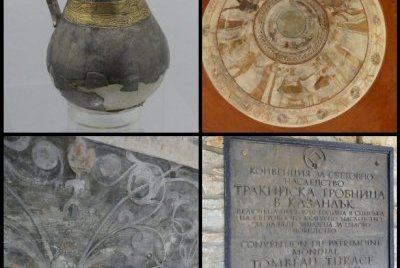
I visited this WHS in 2023. Unlike the Thracian Tomb of Sveshtari, the Thracian Tomb of Kazanlak is right in the middle of a very urban setting, almost like Malta's Hypogeum of Hal Saflieni, although at least it has a small park area as a buffer zone. This contains the closed original tomb with a dome and the latest protective structure, rightly marked as the original tomb. Like at the original Lascaux cave in France's Vezere Valley, there's nothing much to see here apart from the UNESCO WHS inscription plaque which is proudly displayed here.
A few hundred metres away, there is the accessible replica tomb which consists of a hallway, a rectangular antechamber and a round burial chamber. The wall with the entrance to the antechamber is covered with stucco. Although the entrance is 1.96 metres high and 0.72 metres wide at the base, its sides tilt smoothlt to a certain height and then they abruptly narrow down in order to form a pointed triangle at the top (do mind your head when going in and especially when going back out!). The entrance between the two chambers is covered with plaster and fully decorated with colourful ornamentation. The burial chamber has a diameter of 2.65 metres and is 3.25 metres high. A beehive-like bell shaped dome is formed by gradually declining the rows of sector bricks and precise reversal of the dome curve in two places, closed at the top with a keystone.
The walls were plastered …
Keep reading 0 comments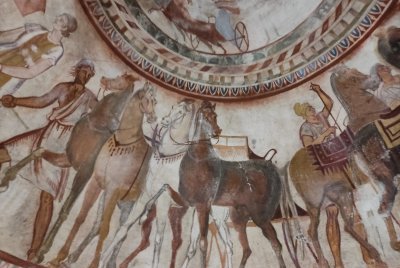
I visited the thracian tomb of kazanlak on the 16th of jan,early in the morning of that day. The day before I had arrived in Kazanlak around 18.00 in the afternoon by train from Burgas via Sliven. The first thing I had encoutered after leaving the railway station in Kazanlak was a place where a huge group of people was dancing to traditional bulgarian music. Fascinating. I asked them if I could join them.Well,my moves were stiff,but the locals were extremely friendly. They explained me that every sunday in most bulgarian cities there is public dancing to traditional music which can be joined by whoever wants to.A wonderful idea to promote native and traditional music and dances in our globalized world.
As for the thomb my hotel was a stone's throw away so that I was exactly at 9.00 at the entrance of the tomb. However,the person working there was not ............there. After 30 min a female employe finally arrived. She didnt expect any visitors and obviously hadnt been in a hurry to get to her working place. Quite annoying! Whats more .....like in most bulgarian and romanian cities packs of dogs roam the parks and public places(just a few days ago a female jogger,a scientist,had been killed by a pack of dogs in Romania's capital Bucharest......two big dogs turned up when I arrived at the entrance of the thomb which is located on a hill at the entrance of a city park. There were quite harmless but just …
Keep reading 0 comments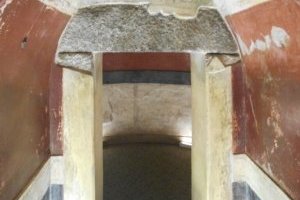
The Thracian tomb of Kazanlak was discovered in 1944 when soldiers were digging trenches in order to protect from air raids. They were named an UNESCO world heritage site in 1979 making it one of the earliest named at all. The original tomb was once in a mound. After its discovery, a small house was built over it in order to protect it. This original tomb is not accessible to the general public. Only scholars with permit from the ministry of culture may enter it. For some time, it was possible to peek into this tomb by looking through iron bar windows in the rear part of the house.
Just a couple metres away is an 1:1 scale replica with a short explanation about the place's history and some items discovered in the tomb.
From a historian's point of view, I can imagine that the Thracian tomb of Kazanlak has a distinctive importance since its frescoes are considered to be the best preserved of the Thracian era in Bulgaria.
From a touristical point of view, the place is fine for a fifteen minute visit (which includes walking around the original) but not more. If ticking off an UNESCO WHS is your only reason to come here, you might be disappointed. It is an incredibly tiny place. The sign asking you not to enter the tomb replica with more than four people is quite sarcastic as I can't imagine how four average-sized male visitors with a light backpack …
Keep reading 0 comments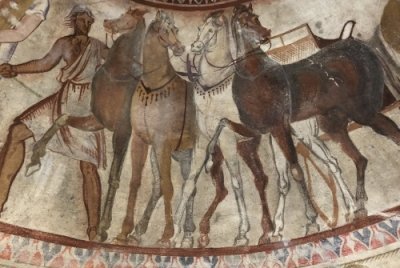
Kazanlak is a fairly nondescript city in the center of Bulgaria. I drove there directly from another WHS – Pirin National Park. It’s a 4-hour drive. They don't really advertise the fact that they hold a true World Heritage Site within the city limits: a painted Thracian Tomb from the 4th century BC. There are signs here and there, but I mainly had to trust the navigation on my phone. The drive ended at the foot of a long staircase in a residential neighbourhood. So this is it?
The visitor experience of this tomb has changed considerably over the years if we look at the reviews that go back to even before 2009. People used to be still allowed into the original tomb for an extra / unofficial fee. That “tomb”, discovered in 1944, now is no longer recognizable as a tomb: a chapel-like building has been placed around it. It is hermetically sealed. There is a helpful sign next to it that says “Thracian Tomb. Original”. It is worth peeking through the iron bars at the front as the WHS plaque is visible from there.
The replica with a more tomb-like appearance lies next to it. A lady is selling tickets (6 Lev / 3 EUR) and some souvenirs. I was the only visitor. I read about guided visits, but the only thing that I got was being directed to an information panel on the wall in Bulgarian and English. And then you have to enter the …
Keep reading 0 comments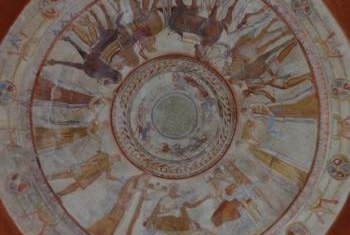
After abandoning visits to 4 WHSs and wasting 4 full days in north-eastern Bulgaria due to winter closure and massive snow, I was able to visit only one new WHS in Bulgaria during this trip: the Thracian Tomb of Kazanlak, which is open year-around no matter what.
But there were at least two surprises.
The first was that the interior of the real tomb has not been accessible for the general public since 2013, and the only option was to visit a replica of the tomb they created recently for a few Euros. Remembering how meticulously the replica of the Lascaux Cave was created (Lascaux ll) in France , I went with that option. After all, Kazanlak was inscribed in the same year as Lascaux (and Pyramids of Egypt and Grand Canyon).
The second and bigger surprise came after I paid a few Euros. After the fiasco in north-eastern Bulgaria, I had a somewhat high expectation for this site, particularly with the replica of Lascaux in my mind. When I walked through a narrow entrance hall to the small round tomb, however, I was stunned that there were no further rooms to explore. This is what I waited for 4 days??? Is this a life-size replica or a miniature-size replica, if such a thing is possible?
The space was like a dome with the floor diameter of 3 meters and the height of also 3 meters. The ceiling did have some intricate frescoes, as you can …
Keep reading 0 comments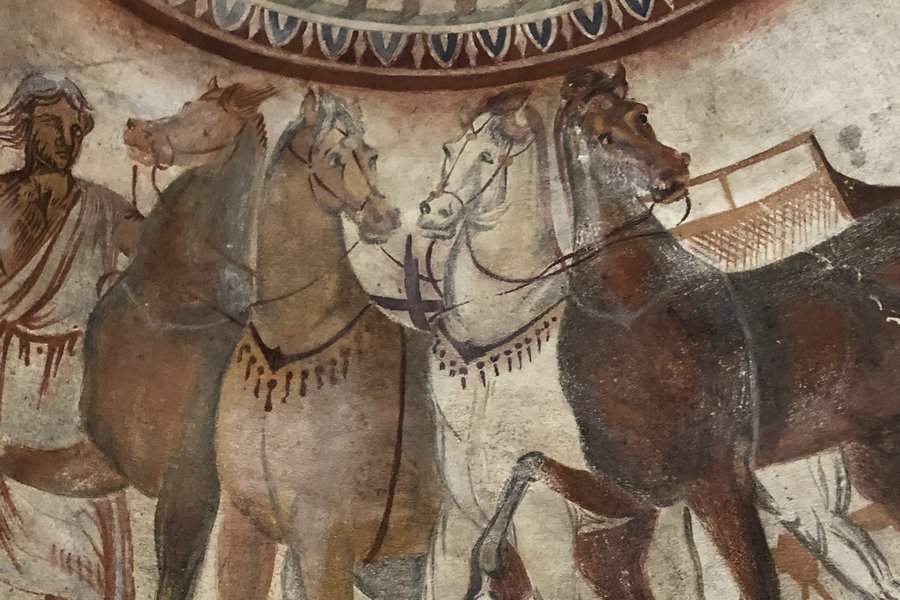
My experience at the Thracian Tomb from Kazanlak was unpleasant since I could not visit not even the replica tomb and that because I did not have Bulgarian money, leva, and the responsible person did not accept Euro or payment by card. Also, being Sunday, all the banks and exchange offices were closed. For me as Romanian and descendant of Getae-Dacians, “the bravest and fairest of all the Thracians” (Herodotus), not being able to see the Thracian Tomb was extremely disappointing.
Keep reading 0 comments
Visited 1 June 2014
The Thracian Tombs at Kazanlak are a LONG day trip from Sofia (better do-able from Plovdiv) but we had 1 day left. (expected to need 2 days to see city center Sofia that was done in a day). Beside the Tombs we wanted to go to Buzludzha which was actually the plan of this day trip and the Thracian tombs are on the way there so a nice combination. First, Buzludzha: see this post for a detailed report on the blog, it’s a old building of the Bulgarian Communist Party. If you are in this neighborhood, visit it!
The Thracian Tombs. These are tombs of the Thracian kings and in the region where at that time was the city of Seuthopolis. The tombs are small hills like bee-hives. The Tomb at Kazanlak is one of the best preserved in Bulgaria. With lots of paintings in the wall representing a Thracian couple at a burial. The tomb is over 6000 years old. Today it’s only possible to visit the replica as the original is sealed for the public to avoid damaging the delicate paintings. Around this tomb there are many more, with over 1000 found in the region. Many are not possible to visit; we visited two more. The Tomb of Seuthes III which is about 30 minutes down the road from Kazalnak, and a few minutes further the Tomb of Ostrusha. The Seuthes III tomb has no paintings, it’s made out of granite blocks and the …
Keep reading 0 comments
The Thracian Tomb in Kazanluk, can be one of the most frustrating WHS sites to visit due to the Bulgarian government really trying to preserve the tomb. We arrived first thing in the morning on a rainy, misty day which is perfect when visiting cemetaries or tombs, and we immediately paid our fee. We looked around the museum, and then walked into the tomb's replica which is a very small area, so it did not take long. I was very dissappointed, and had heard that sometimes the officials will let you in the real tomb. I asked, they made me pay another fee (20 leva) and then they made us cover our clothes with a lab coat, and our feet with booties to go into the real thing. Not surprisingly, the "fake" was indeed an exact replica and it did look exactly like the original. I don't think this is the most impressive WHS site in Bulgaria, but the story of the tomb is interesting and the frescoes are gorgeous. To read more about our visit, please visit our website at: http://rovingvails.com/blog/2010/06/26/760/ .
Keep reading 0 comments
Kazanluk Thracian Tomb (the original) can be visited by ordinary people if they pay and schedule ahead their visit. Talk to the local guide and ask for the process. Otherwise, there are several travel agencies which already obtained the permit through the Ministry of Culture and include the visit to the original in their tours.
Please also keep in mind that the frescoes in the original are very sensitive to temperature and humidity changes, so the visitation is controlled. We want to preserve this wonderful piece of architecture and art at least for the next 2500 years, as it was preserved till now.
Keep reading 0 comments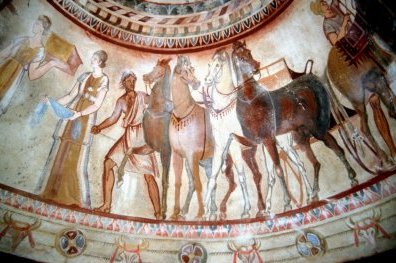
I have mentioned to Els that it might be interesting to produce a list of WHS which one is not actually allowed, as an ordinary member of the public, to enter. The Thracian Tombs of Kazanlak fit into that category since only scholars “with good reason” can get authorisation from the Ministry of Culture!! However all is not lost as the Bulgarians have built what seemed to me to be a rather fine replica next door (some 50mtrs) to the main tomb.
You can walk on the mound of the original tomb but you need to go to the replica to get some idea of what is inside. How accurate the replica paintings are I know not but it is the only chance you are going to get to experience something of what a Thracian tomb from the 3rd or 4th century is like. (PS I think this was the case when we visited in 2000 but, as of 2006, it seems that the WHS inscribed tomb at Sveshtari can at times be visited - see review)
Kazanlak is a pleasant town which anyone doing a tour of Bulgaria is likely to include in their itinerary. It is a world centre for the production of Attar of Roses and the “Rose Museum” and fields are worth visiting. So whilst you are there pick up the Thracian tomb.
Bulgaria was very quick off the mark in getting its WHS sites accepted and by 1983 it already had 7 …
Keep reading 0 comments
